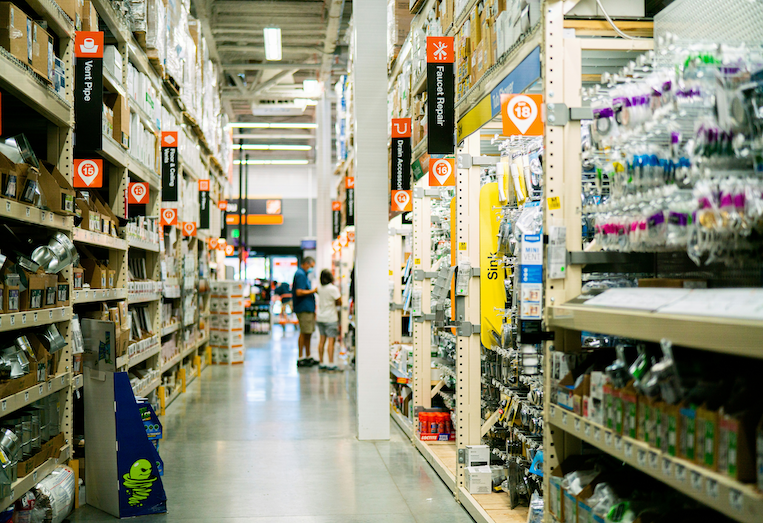


Security Strategies From Law Enforcement Investigators Part 4: Ensuring Equal Security Coverage Across All Store Locations
Ensure equal security across all store locations with consistent use of LPR cameras, video surveillance, and audio detection to deter crime effectively.
Managing a business in 2024 involves handling multiple challenges—ensuring employee safety, retaining top talent, maintaining a strong brand reputation, and keeping the business profitable. It’s a complex task that no business owner should have to face alone.
To help you navigate these challenges, we consulted two experts: David Ballard and Rich McElwain, Flock Safety Solutions Consultants. With over 35 years of combined experience in law enforcement and criminal investigations, they provide invaluable insights into creating safer business environments.
This 7-part series offers practical strategies based on their extensive knowledge, aimed at enhancing security, protecting employees and visitors, and safeguarding your business reputation.
Discover more security strategies for your business in our guide: 7 Security Strategies From Law Enforcement Investigators.
When it comes to securing your business, consistency is key. Ensuring equal security coverage across all store locations is not only a best practice but a necessity in today’s threat landscape. Criminals are adept at identifying and exploiting vulnerabilities, and inconsistent security measures can provide them with the opportunities they need. Here’s why equal security coverage is crucial and how to achieve it using technology.
The Pitfall of Inconsistent Security
Many businesses prioritize security in locations deemed high-risk or those with a history of incidents. While this approach might seem logical, it overlooks a critical factor: criminals often target the path of least resistance. If one location has robust security measures and another does not, the latter becomes an attractive target. This inconsistency can lead to a shift in criminal activity rather than its elimination.
Law enforcement experts who concentrate on organized retail crime (ORC) and fraudulent activity know that criminals have specialized in their craft. As ORC expert David Ballard notes, “Thieves are going to tailor to a particular crime—like catalytic converter theft or stealing power tools. They stay ‘in their lane’ because they know how to convert those stolen goods.” This makes consistent security across all locations even more critical.
Comprehensive Security Strategy
A comprehensive security strategy requires a uniform approach across all locations. This means implementing advanced security technologies and protocols consistently, regardless of each location’s crime history. By doing so, businesses can create a network of secure environments that collectively deter criminal activity.
Implementing Advanced Security Measures
To achieve equal security coverage, consider the following advanced security measures:
- License Plate Reader (LPR) Cameras: Deploy LPR cameras at all store locations to track and monitor vehicle movements. This ensures that any suspicious activity is detected across the entire network of stores, providing a consistent level of security and making it difficult for criminals to exploit less secure locations.
- Video: Install high-definition video cameras at key points in every store. Ensure that both the interior and exterior areas, including parking lots, are covered. Integrate these cameras with a central monitoring system for real-time and recorded footage analysis, creating a unified view of all store locations.
- Audio Detection: Use audio detection systems to capture sounds that may indicate criminal activity, such as gunshots. Integrating this technology with LPR cameras and video provides a comprehensive security solution across all locations.
Training and Coordination
Consistent security coverage also involves training and coordination among security personnel. Ensure that all staff members are trained in the use of security technologies, including LPR cameras, and understand the protocols for responding to incidents. Regular drills and updates can keep the team prepared and alert, ensuring a unified response across all locations.
Conclusion
Ensuring equal security coverage across all store locations is essential for a robust and effective security strategy. By adopting advanced technologies like license plate recognition cameras, video, and audio detection, businesses can create a comprehensive security network that deters criminal activity and protects assets.
Consistency in security measures prevents criminals from exploiting weaker points in your network and ensures that all locations are equally protected. Investing in uniform security coverage is not just about mitigating risks at individual locations—it’s about safeguarding your entire business.
By prioritizing equal security coverage, you’ll create a safer and more secure environment for your employees and customers across the entirety of your business.
Read on to part 5: Creating a Virtual Security Perimeter Using License Plate Reader Cameras





Contact us
Discover how communities across the country are using Flock to reduce crime and build safer neighborhoods.

.webp)










